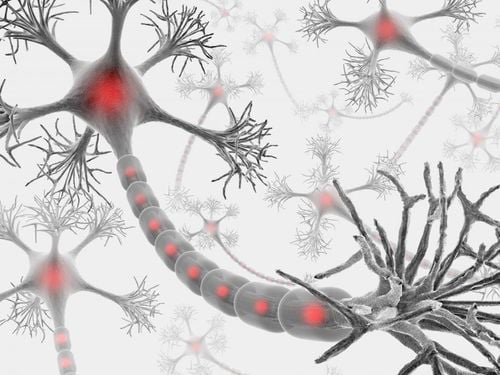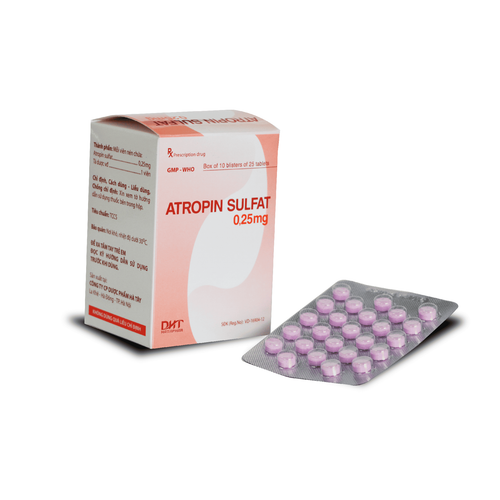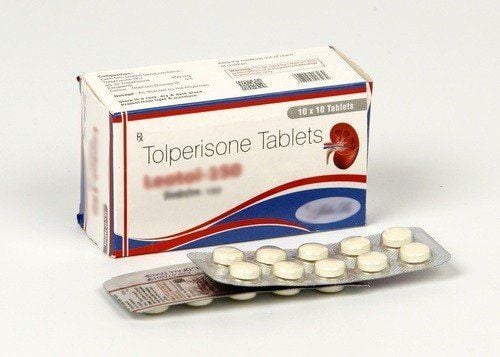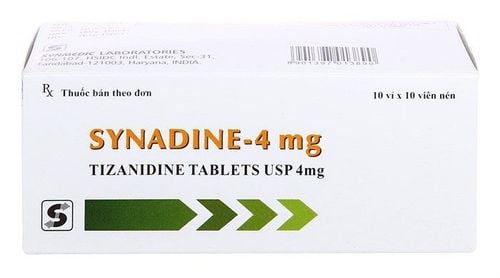This is an automatically translated article.
Paralysis of the lower extremities (paralysis of 2 legs) is a common neurological syndrome that causes severe impact on the ability to walk and move. When treating, it is necessary to distinguish and clarify the two forms of flaccid paralysis, spastic paralysis and the causes leading to spinal cord injury with paralysis of the lower extremities in order to propose appropriate treatment.
1. The role of the spinal cord
The spinal cord is the nerve conduction system from the brain to the rest of the body including the extremities and internal organs. The spinal cord includes the cervical, thoracic and lumbar spinal cord, has a very important nerve conduction task that the spinal cord must be protected by:
Spinal system: neck, lumbar, thoracic (protected in vertebrae and discs). Peripheral nerves (protection in nerve sheaths). Buffer cores: have elastic properties that help connect the vertebrae to perform flexible movements, and at the same time protect the spinal cord inside. However, when there is a problem affecting the bones, discs, and ligaments surrounding the discs, the spinal cord will be affected. Depending on the severity or mildness, it can cause different types of paralysis.
2. Types of spinal cord injury paralyze 2 lower extremities
Paralysis of the lower extremities (hypoparalysis) is a condition in which there is an impairment or loss of voluntary movement of the legs, often accompanied by sensory disturbances. If the cause of paralysis due to stroke is excluded, paralysis of the legs is usually caused by damage to the thoracic and lumbar spine. There are two main types of paralysis: spastic paralysis of the lower extremities and flaccid paralysis.
2.1. Flaccid paralysis Some features of flaccid paralysis of the lower extremities:
Sudden onset. Decrease or complete loss of tendon reflexes. Decreased muscle tone. Decrease or loss of movement of the lower extremities, easy muscle atrophy due to inactivity. Folliculitis usually begins suddenly or acutely, and can have many causes, but if it involves the spinal cord it will be due to the following:
Transverse myelitis : comes on suddenly, usually due to a virus or syphilis roof. Neuromyelitis optica (Devi's disease): damage to the optic nerve associated with signs of myelitis. An accident or injury that cuts through the spinal cord. Disseminated acute myelitis: there are scattered lesions in the spinal cord. Bleeding: usually occurs suddenly, lumbar puncture shows blood in the cerebrospinal fluid. Myelitis caused by other infections: staphylococcus aureus, streptococcus or tubercle bacilli... Myeloma: due to atherosclerosis, myelitis caused by tuberculosis or syphilis, after local anesthetic injection, spinal artery compression due to tumor ... Spinal cord injury, spinal shock after trauma: if the prognosis is good, it can recover by itself after 2-3 weeks. Werdnig-Hoffmann disease: severe type I spinal muscular atrophy, loss of tendon reflexes.
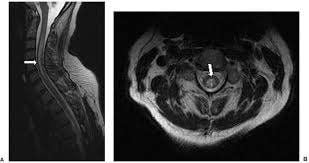
Viêm tủy cắt ngang có thể gây liệt 2 chân
2.2. Spastic paralysis Some features of spastic paralysis of the lower extremities:
Damage to central motor neurons. Progressive progression, often detected at a late stage. pyramidal increase in muscle tone. Usually no muscle atrophy. Sphincter disorders, causing difficulty in defecation. Increased tendon reflexes. May be primary but also secondary (occurs after flaccid paralysis). Some causes of spinal cord compression causing spastic paralysis can be mentioned:
Tuberculosis of the spine: a disease that destroys the spine due to tuberculosis. Signs are pain in the vertebrae of the spine when palpating, difficult to bend over, the spine is often protruding and painful, often easier to detect in children than in adults. Vertebral cancer: usually secondary to other cancers (prostate, cervical, stomach, breast, lung...). Initially, spastic paralysis of the lower extremities changed to flaccid paralysis. Extradural or subdural abscess: signs of infection with pain in the spine when coughing, sneezing, moving, pressing hard..., CSF obstruction, bone loss, imaging shows loss of limits vertebral surface. Extramedullary tumor: is a neuroma with paresthesia or localized radicular pain on one side, progressing very slowly but with a good prognosis if surgery is early. Intramedullary tumors: less common, the most common are endothelial tubular cell tumors and astrocytomas. Difficult to recognize due to atypical signs. Spinal disc herniation: mainly one-sided herniation causing compression of the spinal cord on the same side, due to sports, accidents. The disease can also be idiopathic in people with cartilage dystrophy. Adhesive arachnoiditis: due to tuberculosis or syphilis. Both diffuse peripheral and central symptoms are present, but are often asymmetrical. In general, from flaccid paralysis to spastic paralysis is a sign of a reversible pulp with a good prognosis. From spastic paralysis of the lower extremities to flaccid paralysis, the prognosis is poor, the marrow has been severely affected. If it is a central lesion, it is necessary to clarify whether it is due to spinal cord compression or myelitis, because this is closely related to medical or surgical treatment and propose appropriate treatment.
Currently, Rehabilitation Gym - Vinmec International General Hospital provides the following services:
Rehabilitation after orthopedic surgery: Joint replacement; bone fusion; ligament regeneration ... Rehabilitation of central and peripheral nervous diseases Rehabilitation for cancer patients Rehabilitation of spinal diseases such as: back pain, neck pain, neck pain, degeneration spondylolisthesis, herniated disc...
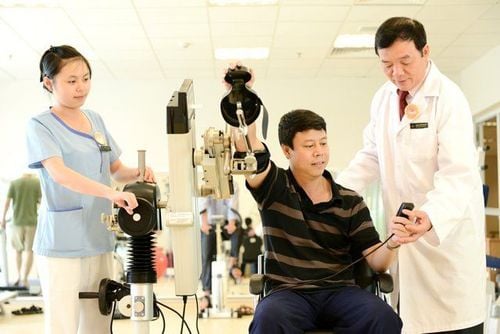
Người bị liệt 2 chân cần điều trị tại phòng tập Phục hồi chức năng theo hướng dẫn của bác sĩ
The gym is also fully equipped with the most modern and synchronous machines with:
A closed chain of gyms from gross to fine motor for Rehabilitation of movement, living and functional training hand. A system of high-class specialized machines, beds, and tools from the Netherlands, Italy, Japan, etc. integrates the application of advanced informatics technology to help optimize the treatment and rehabilitation process for patients. Intensive rehabilitation treatment rooms: Rehabilitation after surgery; Pediatric respiratory physiotherapy; Shock wave treatment; Treatment with magnetic fields... High-class machines, training beds, and specialized tools from the Netherlands, Italy, Japan... integrates the application of advanced informatics technology to help optimize the treatment process. , rehabilitation for patients Especially with the implementation, rehabilitation instructions for patients from a team of experienced and qualified medical doctors at Vinmec will bring opportunities for recovery and quality improvement. the best life for the patient.
Please dial HOTLINE for more information or register for an appointment HERE. Download MyVinmec app to make appointments faster and to manage your bookings easily.




